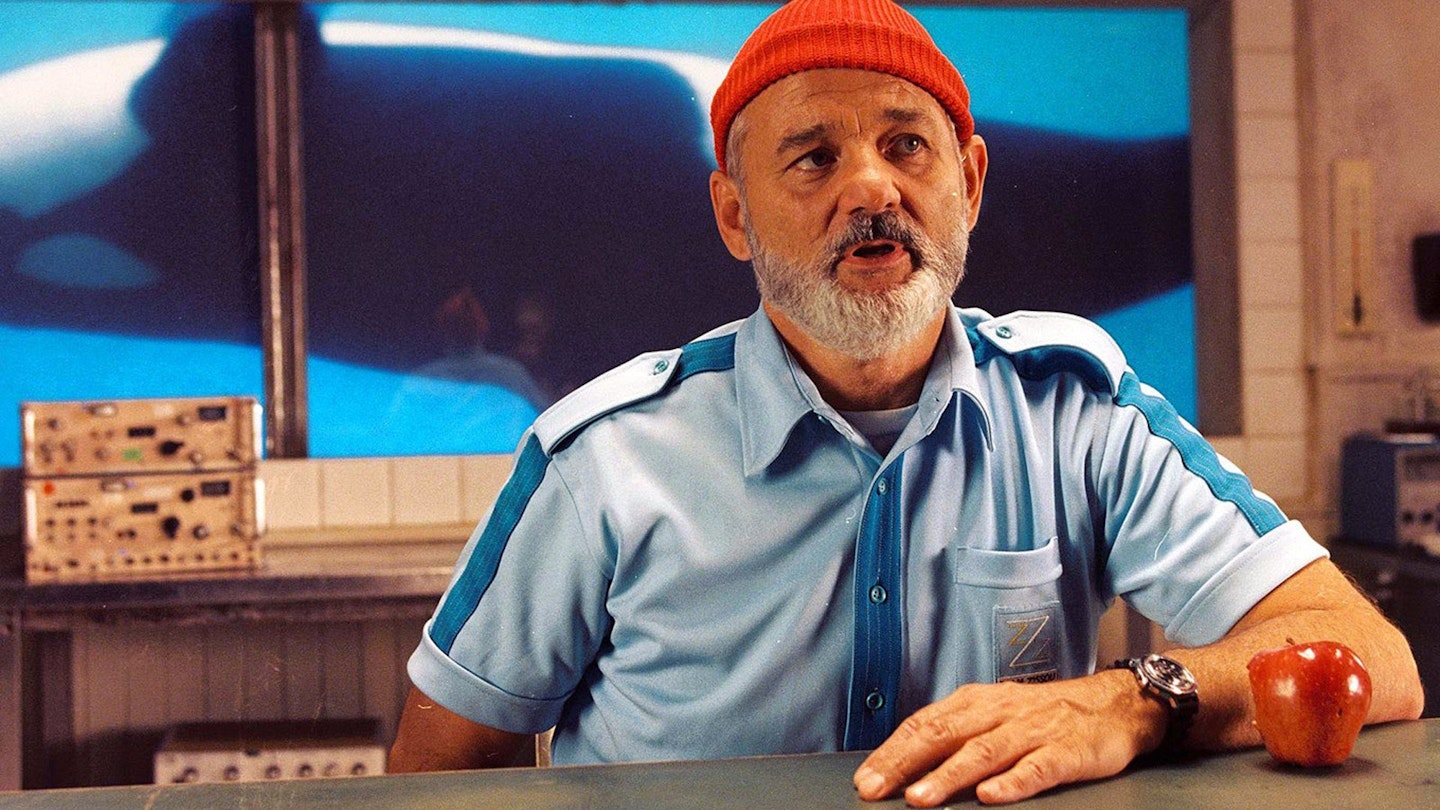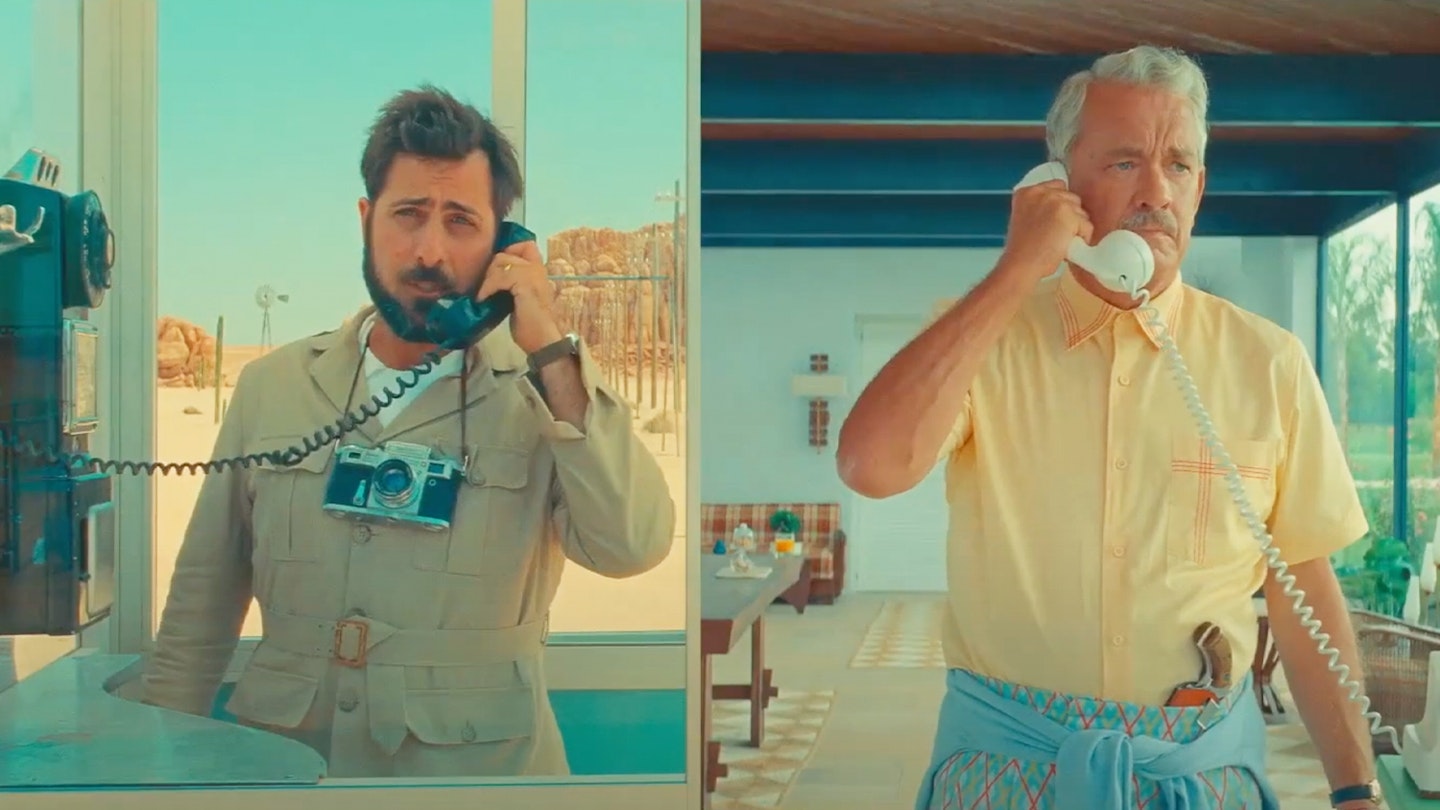Just in case you hadn't noticed, that Wes Anderson's a bit of a quirkaholic. In the excellent Rushmore, we had the bizarrely violent school stage productions of The Max Fischer Players. Then, in The Royal Tenenbaums, there was the unnecessary but inspired inclusion of dalmatian mice scampering around the edges of all those elaborately dysfunctional family dramas. Anderson's dives into leftfield have always suggested self-indulgence, but have been well-executed enough to appeal rather than irritate - especially when beneath the artifice there-s always throbbed a welcome ache of pathos, borne out by lovingly sketched characters.
Anderson's latest is clearly closer to his heart than any of his previous movies, and features all his trademarks in garish Technicolor. His recognition of the comedic value of uniform - from Bottle Rocket's boiler suits to Tenenbaum's tight red tracksuits - here results in the hilarious "Team Zissou" get-up: pastel-blue shirts, bright crimson woolly hats, Glock strapped to right thigh. His slavish attention to music results in an interesting mix of laidback acoustic cover versions and deliberately dated, analogue-electro flurries. His predilection for made-up animals like those spotty Tenenbaum rodents is realised via Henry Selick's exotic stop-motion sea-fauna creations. Plus, of course, his fascination with Jacques Cousteau, so apparent in Rushmore (a quote from the celebrated French sub-aquatic explorer is what spurs Max to campaign for a school aquarium), is elevated in this movie to raison d'être.
The Life Aquatic presents a parallel reality which straddles our world and another trapped in the late '60s, when Cousteau's international popularity was at its height. The technology invented and employed by Team Zissou is supposed to be cutting-edge, yet it displays a retro chunkiness which recalls early Bonds. Zissou's own movies, segmenting his various quests into hokily-titled chapters, feel like they were made decades ago; in fact, they're very deliberately reminiscent of TV series The Undersea World Of Jacques Cousteau, which charted the real diver's adventures.
Zissou, of course, isn't a real diver, and Anderson plays up the concept that, as Zissou's critics suspect, he might be a fraud, even possibly faking his friend's death to manufacture publicity for his latest quest - in search of a creature that doesn't even exist. The lines blur between the "real" world as presented in Anderson's movie, and the "fake" world shot by Zissou's crew within Anderson's movie. In one superb sequence, we're taken on a tour of Steve's ship The Belafonte, but rather than show it as a Steadicam whirl through hatches and cabins, we follow the characters as they walk around a very obvious cross-section set. Plus, of course, there's all those stop-motion critters, which, in this age of crisp CGI, can't look anywhere near realistic. The schtick being: how can Zissou be a fake if the entire world he inhabits is equally artificial?
Unfortunately, for all its comic, aesthetic astuteness, there's something very important missing from Anderson's latest that's always been there before: heart. There's a half-arsed attempt to jimmy in some romance between Blanchett's journo and Wilson's amiable Ned, while Ned's maybe-father/maybe-son relationship with Steve fails to stir up any feeling and climaxes with something of a dramatic gaffe. The artificiality encouraged by the helmer proves overwhelming, with the story's more serious elements either looking horribly out of place (such as when the Zissou ship is boarded by violent Indonesian pirates) or becoming so sapped of emotion they sink to the level of a cheap afternoon soap.
Even the ever-reliable Murray struggles. He's no doubt happy to be indulging Anderson, but all the while is seemingly unconvinced that Zissou could ever be a bona-fide, oxygen-inhaling human being. Consequently, neither are we. Yes, the wetsuits are snazzy, but when you tear into them like Steve's mythical jaguar shark, you won't find much meat within.





